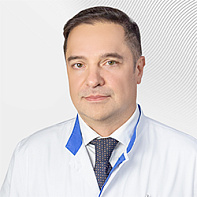PET/CT SCAN with 18F-DOPA
18F-DOPA (18F-DOPA) is one of the radiopharmaceutical drugs for positron emission tomography. It is one of the longest-existing PET drugs. It was developed in the early 1980s to diagnose Parkinson's disease. Later, other features of this substance were discovered, namely, accumulation in malignant brain tumors and some neuroendocrine tumors, which allowed the drug to be used to diagnose various diseases.
Diagnosis of Parkinson's disease
Parkinson's disease is a slowly progressive chronic neurological disease characteristic of the elderly, manifested by characteristic motor disorders. Differential diagnosis of Parkinson's syndrome and Parkinson's disease is performed using various diagnostic methods. These conditions have similar clinical manifestations, but completely different causes and treatment methods. Several diagnostic methods, including PET, are used for timely and accurate diagnosis./CT scan with 18F-DOPA (PET/CT scan with 18F-FDOPA)
Diagnosis of malignant brain tumors
The second point of application of the drug 18F-DOPA is the diagnosis of malignant brain tumors. The main diagnostic method in neuro-oncology is magnetic resonance imaging. However, MRI does not answer all the questions. For additional information, PET is used./CT scan with labeled amino acids.
PET/CT c18F-DOPA is used for the purpose of:
-
differential diagnosis of gliomas with high and low malignancy,
-
differential diagnosis of continued growth (tumor recurrence) and post-radiation necrosis.
Diagnosis of neuroendocrine tumors
The most widely used radiopharmaceutical in PET, fluorodeoxyglucose, is not used in the diagnosis of this group of tumors. This is due to the low glycolytic activity of this group of tumors.
Other RFPs have been created for this group of tumors, in particular, 18F-DOPA.
18F-DOPA is one of the best drugs for diagnosis:
- medullary thyroid cancer
- paraganglioma and pheochromocytoma
- with insulin
Diagnosis of congenital hyperinsulinism
Congenital hyperinsulinism is a rare and severe disease in which the cells of the pancreas produce enormous amounts of insulin. Treatment in most cases is radical – removal of the pancreas. Removing the entire pancreas in infancy negatively affects the quality of life. With the help of PET/CT c18F-DOPA, it is possible to localize that part of the pancreas whose cells produce excessive insulin. If this is successful, partial resection of the gland is sufficient for complete recovery.
Advantages of PET18F-DOPA in EMC
- The examination is performed using modern Gemini TF64-Philips PET/CT equipment according to European protocols.
- The research is performed by highly qualified specialists, members of the European Association of Nuclear Medicine (EANM), with experience in work and internships abroad.
- The EMC Radionuclide Diagnostics Center uses high-quality radiopharmaceuticals that are manufactured in its own laboratory and have passed strict quality control.
Doctors



.jpg)
















- Actively participates in the work of scientific and research institutions
- He currently holds the position of Professor of Radiology at Hadassah Hospital. Member of the Education Committee of Hebrew University – Hadassah School of Medicine
- Awarded for outstanding contribution to Israeli Healthcare - Israeli Medical Association




